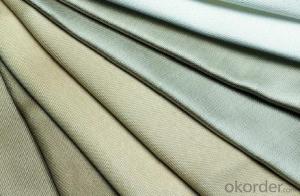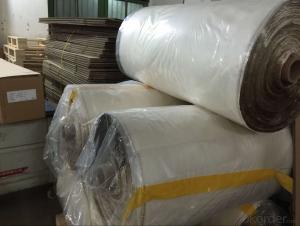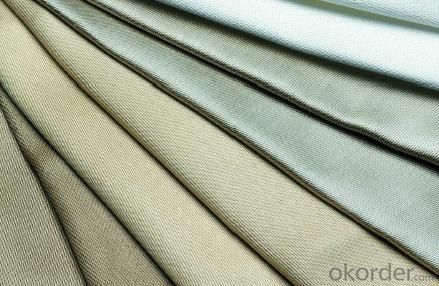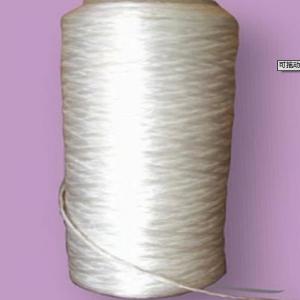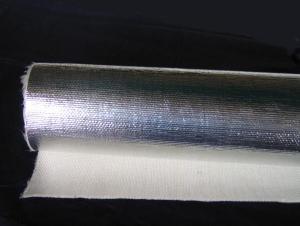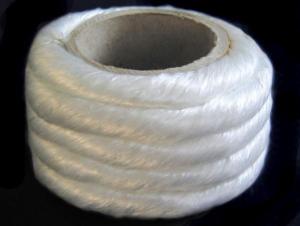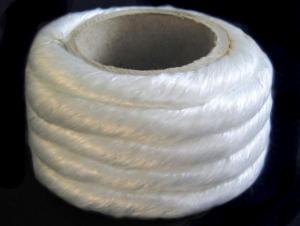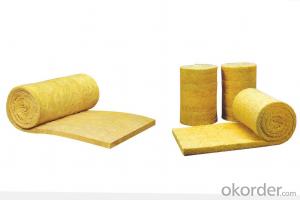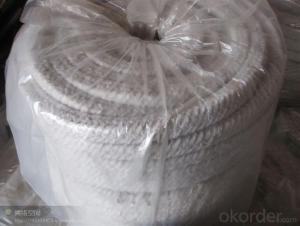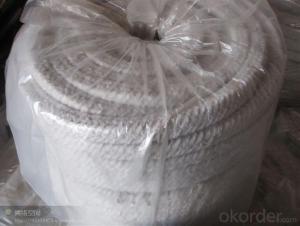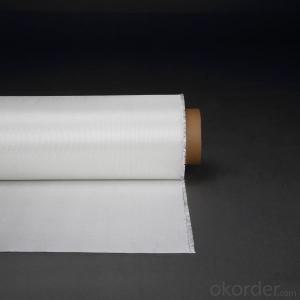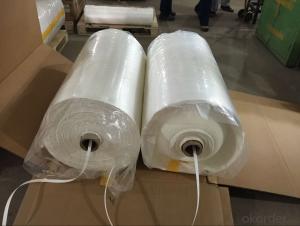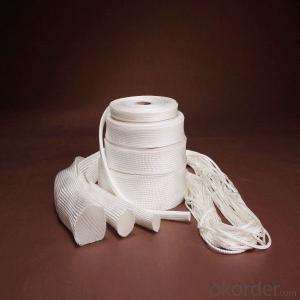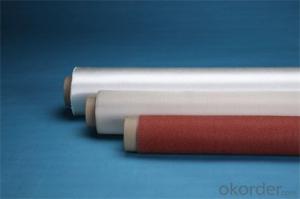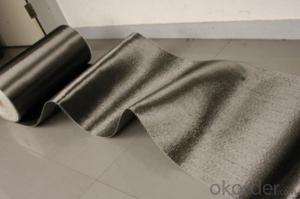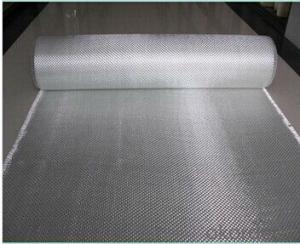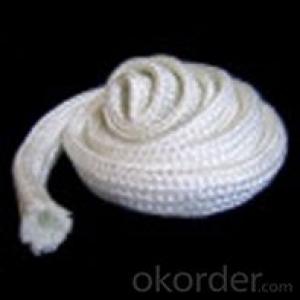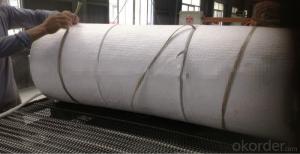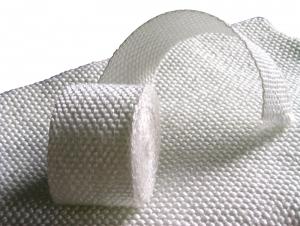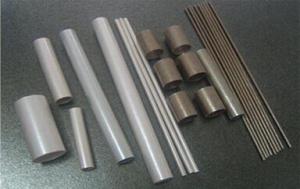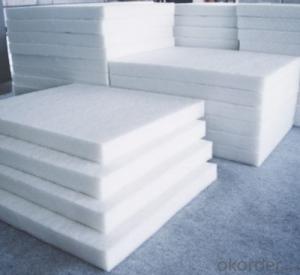Glass Fiber Textiles - 36oz Silica Fiberglass Cloth Resisting 1000°C for Heat Resistance
- Loading Port:
- China main port
- Payment Terms:
- TT OR LC
- Min Order Qty:
- 1000 m
- Supply Capability:
- 100000 m/month
OKorder Service Pledge
OKorder Financial Service
You Might Also Like
Product Description
Silica fiberglass is inorganic fiber that contents more than 96% of SiO2, it's resistant to high temperature, soft point 1700°C, long term service temperature 900 °C, it can work 10 minites at 1450 °C and keeps good state at 1600 °C for 15 seconds. For it's properties of chemical stability, high temperature resistance and ablation resistance, it widely used in aviationand aerospace, metallurgy, chemical, building material and fire fighting industry, etc.
Our factory is the only one that specialized manufacture silica fiberglass in China and has the production line of the whole process from marble making, fiber forming, weaving, and finish. The strength of silica fiberglass made from Na2O-B2O3-SiO2 system glass is 3-5 times higher than that from E glass. The products sold to more than 20 provinces, cities, autonomous regions and exported to foreign countries.
Silica fiberglass products are available in forms of needled mat, fabric, scrim, staple yarn, chopped strand and cord, etc.
Product Properties
1> SiO2>=96%
2> soft point nearly 1700°C, long-time working at 900°C
3> low thermal conductivity
4> good chemical stability
5> good electrical insulation
6> low thermal shrinkage
7> Non-asbestos product without pollution
8> good process performance
Product Uses
High temperature resistant, insulation and sealing material
High temperature ablation resistant material
Fireproof material (for fireproof protective clothe, fireproof curtain, fire blanket)
Dust collecting in media of high temperature gas and filtration in media of high temperature liquid
Filter for molten metal
Distinguisher, insulation material, filtration of automobile and motorcycle
Protective material for welding
Electricity insulation material
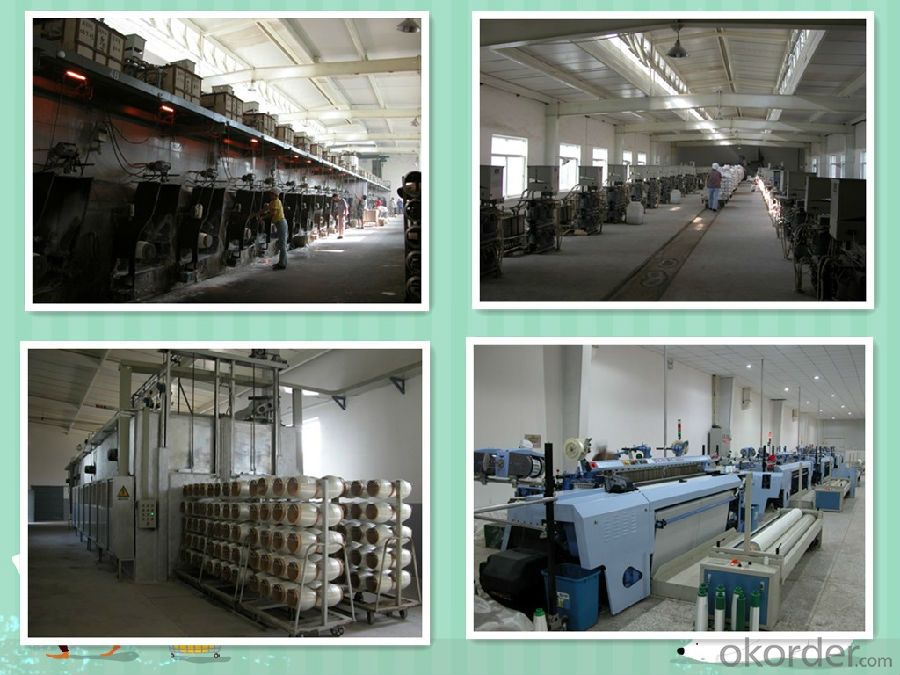
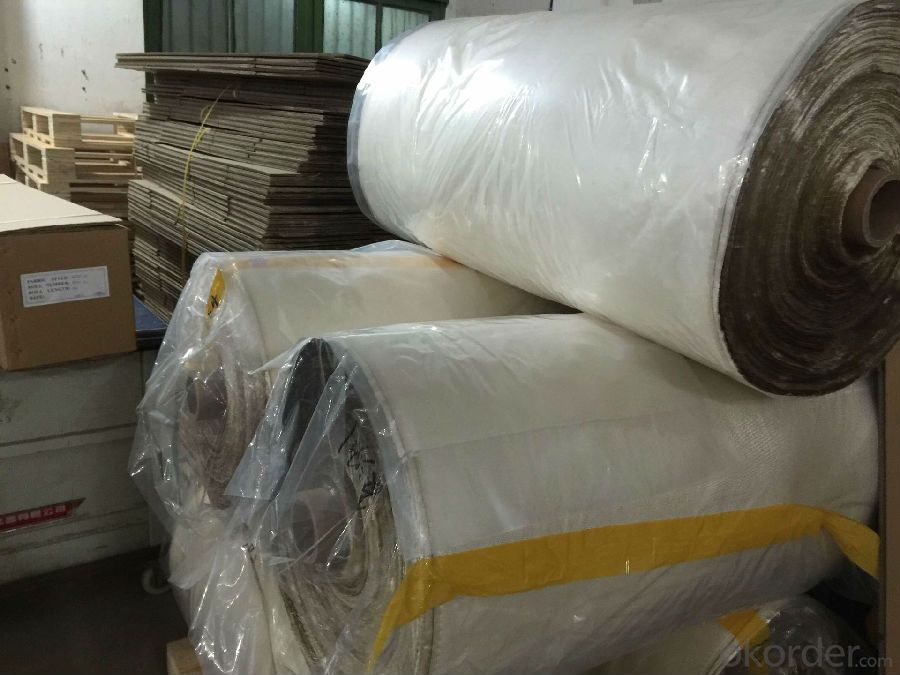
- Q: How do glass fiber textiles contribute to moisture resistance?
- Glass fiber textiles contribute to moisture resistance by being inherently non-absorbent and water repellent. The smooth and dense surface of glass fibers prevents moisture from penetrating the fabric, making it an excellent barrier against water and humidity. Additionally, the hydrophobic nature of glass fibers allows them to quickly shed any moisture that comes into contact with the fabric, ensuring that it remains dry and resistant to moisture damage.
- Q: Can glass fiber textiles be used in medical applications?
- Glass fiber textiles have the capability to be used in medical applications. Renowned for their strength, durability, and resistance to chemicals, glass fiber textiles are appropriate for a range of medical uses. They find common employment in surgical gowns, drapes, and other protective clothing, as they effectively create a barrier against liquids and pathogens. Additionally, glass fiber textiles are utilized in wound dressings and bandages to provide support, facilitate wound healing, and allow for breathability. Moreover, they contribute to stability and reinforcement in prosthetics and orthotics. Nevertheless, it is essential to note that glass fiber textiles can potentially cause irritation or allergic reactions in certain individuals, necessitating cautious consideration when utilizing them in direct contact with the skin. All things considered, the distinctive properties and versatility of glass fiber textiles have proven advantageous in medical applications.
- Q: How do glass fiber textiles affect manufacturing processes?
- Manufacturing processes in various industries are significantly impacted by glass fiber textiles, which offer a multitude of benefits that enhance efficiency, durability, and overall quality. Strength and reinforcement are provided by glass fiber textiles, making them a primary factor in manufacturing processes. Due to their high tensile strength, these textiles can reinforce various materials and products. Incorporating glass fiber textiles into manufacturing processes enables companies to create stronger and more durable end products, which is particularly essential in industries like automotive, aerospace, and construction where strength and structural integrity are critical. Additionally, glass fiber textiles possess excellent thermal insulation properties, allowing them to withstand high temperatures without degradation. This feature makes them ideal for use in manufacturing processes involving heat. By utilizing glass fiber textiles as insulation, companies can safeguard their equipment and products from heat-related damage and improve energy efficiency in systems like heating, ventilation, and air conditioning (HVAC). Moreover, glass fiber textiles exhibit exceptional resistance to chemicals, moisture, and corrosion, making them suitable for manufacturing processes where exposure to harsh substances or environmental conditions is common. For instance, in the chemical processing industry, glass fiber textiles can serve as protective coatings or linings for equipment to prevent corrosion. Furthermore, glass fiber textiles are lightweight and flexible, enabling easy handling and manipulation during manufacturing processes. They can be woven, molded, or laminated onto other materials effortlessly, providing greater design flexibility and customization. This versatility allows manufacturers to create complex shapes and structures, leading to innovative and efficient manufacturing processes. In addition to their physical properties, glass fiber textiles possess excellent electrical insulation properties. They effectively insulate against electrical current, making them suitable for use in electrical and electronic manufacturing processes. By incorporating glass fiber textiles into these processes, companies can ensure the safety and reliability of their electrical components and devices. In conclusion, glass fiber textiles are an indispensable material in various industries, playing a crucial role in manufacturing processes. They provide strength, thermal insulation, chemical resistance, flexibility, and electrical insulation, all of which enhance the quality, efficiency, and durability of products.
- Q: Can glass fiber textile be used in battery technology?
- Yes, glass fiber textile can be used in battery technology. Glass fiber textiles are known for their high strength, durability, and resistance to chemicals and heat. These properties make them suitable for various applications in battery technology. One way glass fiber textile can be used in battery technology is as a separator material. Batteries consist of positive and negative electrodes, and a separator is needed to prevent these electrodes from coming into direct contact with each other. Glass fiber textiles can serve as an effective separator due to their ability to withstand high temperatures and resist degradation from the electrolyte present in batteries. Glass fiber textiles can also be used as reinforcement material in battery electrodes. Battery electrodes typically consist of a current collector and an active material, which stores and releases energy during the charging and discharging process. By incorporating glass fiber textiles into the electrode structure, the overall strength and mechanical stability of the electrode can be improved, leading to enhanced battery performance and longevity. Furthermore, glass fiber textiles can be used in battery packaging to provide insulation and protection. Batteries generate heat during operation, and it is crucial to manage and dissipate this heat to ensure safe and efficient battery functioning. Glass fiber textiles can act as a thermal barrier, preventing excessive heat from escaping or entering the battery, thus maintaining optimal operating temperatures. In summary, glass fiber textiles can indeed be utilized in battery technology for various purposes such as separators, reinforcement materials, and thermal barriers. Their exceptional strength, durability, and resistance to chemicals and heat make them suitable for enhancing battery performance, safety, and longevity.
- Q: How do glass fiber textiles perform in extreme weather conditions?
- Glass fiber textiles perform exceptionally well in extreme weather conditions. They have high resistance to heat, cold, and moisture, making them a reliable choice for various applications. They can withstand high temperatures without losing their structural integrity and are highly durable against harsh weather elements such as rain, snow, and strong winds. Additionally, glass fiber textiles exhibit excellent fire resistance properties, making them suitable for use in extreme weather conditions where fire hazards are a concern.
- Q: Can glass fiber textiles be used in conveyor belts?
- Yes, glass fiber textiles can be used in conveyor belts. Glass fiber textiles are known for their high strength and excellent resistance to heat, chemicals, and abrasion. These properties make them suitable for various industrial applications, including conveyor belts. Glass fiber textiles can be used as reinforcement materials in conveyor belts to enhance their tensile strength and durability. Additionally, glass fiber textiles can provide excellent thermal insulation, making them suitable for conveyor belts operating in high-temperature environments. Overall, glass fiber textiles offer numerous advantages that make them a viable option for use in conveyor belts.
- Q: Are glass fiber textiles breathable?
- In the traditional sense, glass fiber textiles lack breathability. Unlike cotton or wool, natural fibers, air cannot easily pass through glass fiber textiles. This is because glass fibers are tightly woven and lack the moisture absorption and release capabilities of natural fibers. Consequently, wearing glass fiber textiles may lead to discomfort and perspiration as the fabric hinders proper ventilation.
- Q: What are the different thickness options for glass fiber textile?
- Glass fiber textile is available in various thickness options to suit different applications and requirements. The thickness of glass fiber textile is typically measured in grams per square meter (gsm) or ounces per square yard (oz/yd²). The most common thickness options for glass fiber textile range from 100 gsm to 600 gsm (3 oz/yd² to 18 oz/yd²). These thicknesses are suitable for a wide range of applications, including reinforcement in composites, insulation, and filtration. For lightweight applications that require minimal reinforcement, glass fiber textiles with lower thicknesses, such as 100 gsm to 200 gsm (3 oz/yd² to 6 oz/yd²), are commonly used. These thinner textiles are often used in industries like automotive, aerospace, and marine, where weight reduction is crucial. Medium thickness options for glass fiber textiles, ranging from 200 gsm to 400 gsm (6 oz/yd² to 12 oz/yd²), are suitable for general reinforcement purposes. These textiles provide a balance between strength and weight, making them versatile for applications like boat building, wind turbine blades, and sporting goods. For heavy-duty applications that require maximum strength and durability, thicker glass fiber textiles are used. These textiles typically range from 400 gsm to 600 gsm (12 oz/yd² to 18 oz/yd²) and are commonly employed in industries such as construction, oil and gas, and infrastructure. They are used for applications like concrete reinforcement, pipe wrapping, and geotextiles. It is important to note that manufacturers may offer additional thickness options beyond the mentioned range, depending on the specific needs of customers. Custom thicknesses can also be ordered in some cases. Ultimately, the choice of glass fiber textile thickness depends on the intended application, required strength, and weight considerations. Consulting with a supplier or expert in the field can help determine the most suitable thickness option for a particular project.
- Q: What is the weight of glass fiber textiles?
- The weight of glass fiber textiles may differ based on the type and thickness of the textile. Typically, glass fiber textiles are lightweight and can vary from a few grams per square meter to approximately 200 grams per square meter. Nevertheless, it is crucial to consider that there are different glass fiber textiles, including woven fabrics, non-woven fabrics, and mats, each with unique weight properties. Hence, it is recommended to refer to the product's specifications or consult the manufacturer for precise information regarding the weight of a specific glass fiber textile.
- Q: Can glass fiber textile be woven?
- Yes, glass fiber textile can be woven.
Send your message to us
Glass Fiber Textiles - 36oz Silica Fiberglass Cloth Resisting 1000°C for Heat Resistance
- Loading Port:
- China main port
- Payment Terms:
- TT OR LC
- Min Order Qty:
- 1000 m
- Supply Capability:
- 100000 m/month
OKorder Service Pledge
OKorder Financial Service
Similar products
Hot products
Hot Searches
